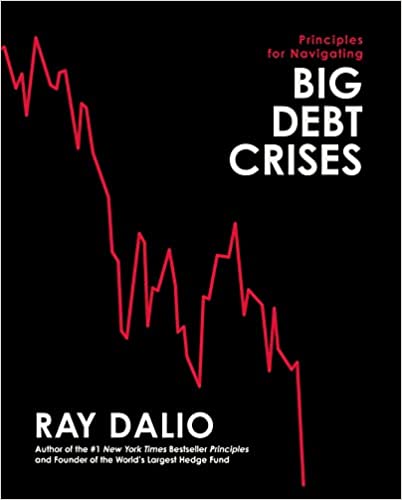Ray Dalio, the legendary investor and #1 New York Times bestselling author of Principles—whose books have sold more than five million copies worldwide—shares his unique template for how debt crises work and principles for dealing with them well. This template allowed his firm, Bridgewater Associates, to anticipate 2008’s events and navigate them well while others struggled badly.
As he explained in his #1 New York Times bestseller Principles, Ray Dalio believes that most everything happens over and over again through time so that by studying patterns one can understand the cause-effect relationships behind events and develop principles for dealing with them well. In this three-part research series, he does just that for big debt crises and shares his template in the hopes of reducing the chances of big debt crises happening and helping them be better managed in the future.
The template comes in three parts:
1. The Archetypal Big Debt Cycle (which explains the template)
2. Three Detailed Cases (which examines in depth the 2008 financial crisis, the 1930s Great Depression, and the 1920s inflationary depression of Germany’s Weimar Republic)
3. Compendium of 48 Cases (which is a compendium of charts and brief descriptions of the worst debt crises of the last 100 years)
Whether you’re an investor, a policy maker, or are simply interested in debt, this unconventional perspective from one of the few people who navigated the crisis successfully, Principles for Navigating Big Debt Crises will help you understand the economy and markets in revealing new ways.
چکیده فارسی
ری دالیو، سرمایهگذار افسانهای و نویسنده شماره 1 نیویورک تایمز پرفروشترین کتاب اصول - که کتابهایش بیش از پنج میلیون نسخه در سراسر جهان فروختهاند - الگوی منحصربهفرد خود را برای نحوه عملکرد بحرانهای بدهی و اصول برخورد خوب با آنها به اشتراک میگذارد. این الگو به شرکت او، Bridgewater Associates، اجازه میدهد تا رویدادهای سال 2008 را پیشبینی کند و آنها را به خوبی هدایت کند، در حالی که دیگران به سختی تلاش کردند.
ری دالیو همانطور که در کتاب «اصول» پرفروشترین کتاب نیویورک تایمز توضیح داد، معتقد است که بیشتر همه چیز در طول زمان بارها و بارها اتفاق میافتد تا با مطالعه الگوها بتوان روابط علت و معلولی پشت رویدادها را درک کرد و اصولی را برای برخورد خوب با آنها ایجاد کرد. در این مجموعه تحقیقاتی سه قسمتی، او دقیقاً این کار را برای بحران های بدهی بزرگ انجام می دهد و الگوی خود را به امید کاهش احتمال وقوع بحران های بدهی بزرگ و کمک به مدیریت بهتر آنها در آینده به اشتراک می گذارد.
این قالب دارای سه بخش است:
1. چرخه کهن الگوی بدهی بزرگ (که الگو را توضیح می دهد)
2. سه مورد مفصل (که به طور عمیق به بررسی بحران مالی 2008، رکود بزرگ دهه 1930 و رکود تورمی دهه 1920 جمهوری وایمار آلمان می پردازد)
3. خلاصه ای از 48 مورد (که خلاصه ای از نمودارها و توضیحات مختصری از بدترین بحران های بدهی در 100 سال گذشته است)
چه سرمایهگذار باشید، چه سیاستگذار، یا صرفاً به بدهی علاقهمند باشید، این دیدگاه غیرمتعارف یکی از معدود افرادی که بحران را با موفقیت پشت سر گذاشتند، اصولی برای هدایت بحرانهای بدهی بزرگ به شما کمک میکند اقتصاد و بازارها را در آشکار کردن موارد جدید درک کنید. راه ها.
ادامه ...
بستن ...










